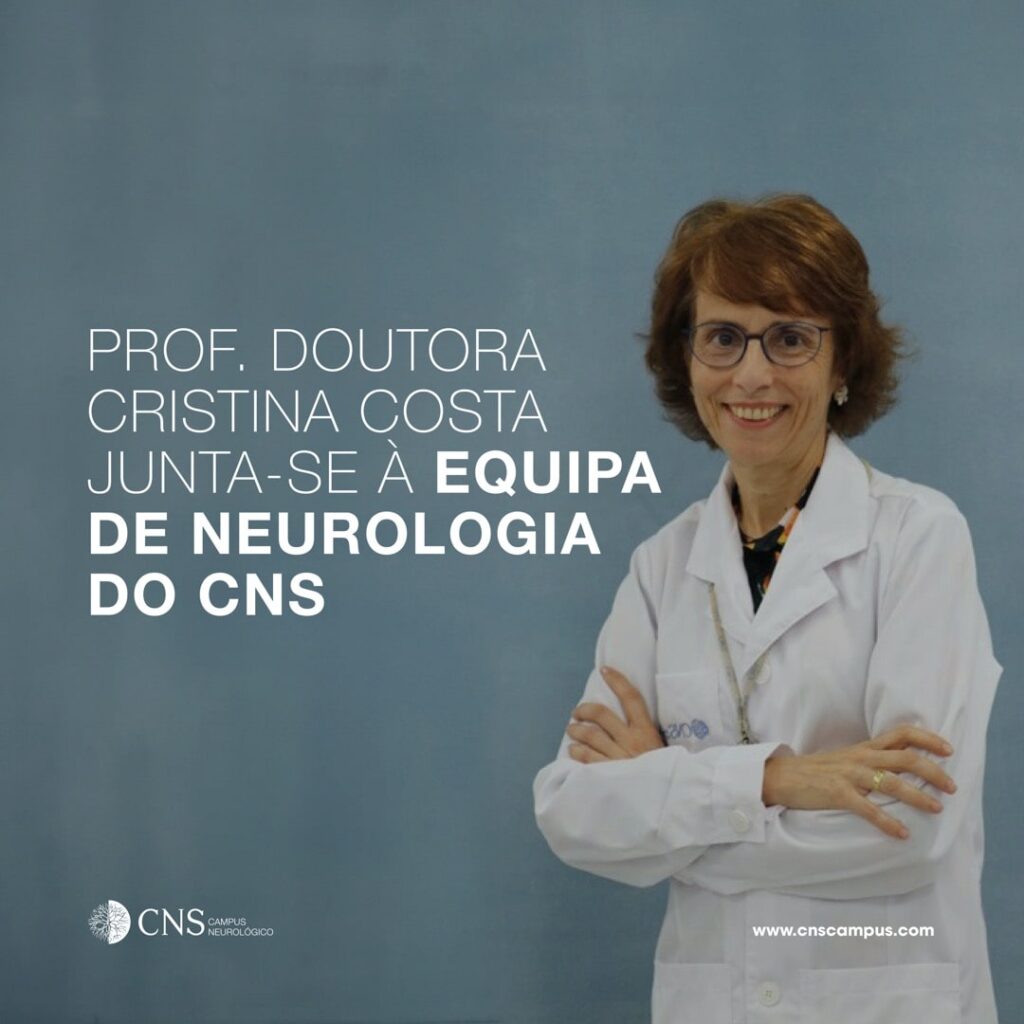Professor Doctor Cristina Costa, a neurologist since 1993 and Ph.D. in Developmental Neurobiology since 2000, recently joined the CNS team. We share an interview in which she introduces some of her main areas of interest, explains the benefits of certain procedures she will be performing at CNS, and shares her experience as the current President of the Portuguese Society of Movement Disorders (SPDMov).
Her main area of interest is hereditary diseases of the nervous system. What are these diseases and what treatments are available? What attracts her to these diseases?
Professor Doctor Cristina Costa (CC) – These are diseases that can be passed from one generation to another, that is, from parents to children, due to a change in the DNA (mutation), specifically in a gene. Examples include Hereditary Ataxias, Hereditary Spastic Paraparesis, and Huntington’s Disease.
Although there is still no cure, many efforts are being made to find effective treatments that can alter the course of these diseases. In the meantime, there is still much to do to care for the affected person, such as treating their symptoms and preventing future complications, to ensure the best possible quality of life. In the case of these diseases, this often means providing assistance to caregivers and family members as well, that is, paying attention to the patient and the family context in which they are inserted.
On the other hand, it is very important for me to contribute to increasing knowledge about rare diseases, so I have collaborated in the clinical research of some of them, in collaboration with other neurologist colleagues and basic science research groups.
Another area of interest is the administration of botulinum toxin guided by ultrasound. What is the advantage of this procedure and which patients can benefit from this technique?
CC – I have been treating neurological patients with botulinum toxin for over 20 years, and since 2015, I have been using ultrasound as an auxiliary method in cases of dystonias, for example, cervical or limb dystonias, and tremor of the upper limbs, as well as for the treatment of sialorrhea (when it is necessary to reduce the amount of saliva produced by injecting this medication into the salivary glands). Ultrasound is useful in these cases because it is a non-invasive technique that helps ensure that the botulinum toxin is administered exactly in the intended muscle or gland, while also avoiding hitting adjacent arteries and nerves.
What motivated you to join the CNS team?
CC – The opportunity to work in a center dedicated specifically to neurological diseases, with high-quality professionals and a team composed of various specialists, where there is an investment in training and clinical research, which is a national reference for neurological care.
You are currently the President of the Portuguese Society of Movement Disorders (SPDMov). What did you think when you took on this responsibility? How has this experience been?
CC – It was a great honor for me to accept this challenge, which carries great responsibility. I did it because I believe I can contribute to further developing SPDMov. It has been an enriching experience that I intend to successfully carry out thanks to the excellent team with whom I work.
